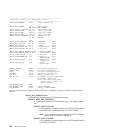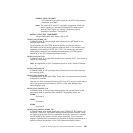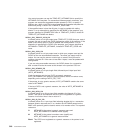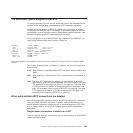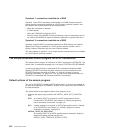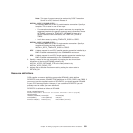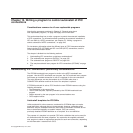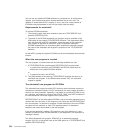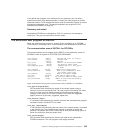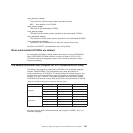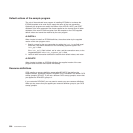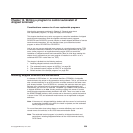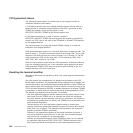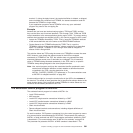You can use any installed IPCONN definition as a template but, for performance
reasons, your template must be an installed definition that is not in use. The
definition is locked while CICS is copying it, and, if you have a large number of
IPCONNs being autoinstalled at one time you might notice the delay.
Requirements for autoinstall
To activate IPCONN autoinstall:
1. The receiving region must have installed at least one TCPIPSERVICE that
specifies PROTOCOL(IPIC).
2. The name of the IPCONN autoinstall user program must be specified on the
URM option of the installed TCPIPSERVICE definition. This requirement differs
from the autoinstall of APPC connections, where the name of the autoinstall
user program is specified on the AIEXIT system initialization parameter.
IPCONN autoinstall has no equivalent system initialization parameter. Instead,
the name of the autoinstall user program is specified on the TCPIPSERVICE
definition.
As with APPC, putting the template IPCONNs out-of-service disables the autoinstall
function.
When the user program is invoked
The user program is invoked when both the following conditions are met:
1. A TCPIPSERVICE that is defined with PROTOCOL(IPIC) receives either
v A connect flow containing a NETWORKID and APPLID combination for
which there is no installed IPCONN definition
or
v A connect flow with a null APPLID.
2. The URM attribute of the receiving TCPIPSERVICE specifies the name of an
autoinstall user program. If the URM attribute contains “NO”, the autoinstall
request is rejected.
The autoinstall user program for IPCONNs
The autoinstall user program provides CICS with any extra information required to
complete an autoinstall request. For IPIC connections, the user program provides a
name for the new connection. Optionally, it can select an in-service IPCONN to use
as a template, and modify the values of the APPLID, HOST, and PORT attributes of
the new connection from those supplied on the connect flow.
RECEIVECOUNT on the autoinstalled IPCONN is set to the value requested on the
connect flow from the client, or the minimum of this value and the RECEIVECOUNT
from the template, if a template is specified. All other attributes of the new IPCONN
are taken from the template, or from CICS-supplied values if no template is
specified, and cannot be modified by the user program.
If the selected template is usable, CICS makes a copy of the definition in it and
attempts to install the new IPCONN definition. If the installation is not successful, a
message is issued.
The default autoinstall user program, DFHISAIP, is an assembler-language
program. DFHISAIP is the default value of the URM option on a TCPIPSERVICE that
specifies PROTOCOL(IPIC).
554 Customization Guide



